Xuemin Zhang
A Data-driven Dynamic Temporal Correlation Modeling Framework for Renewable Energy Scenario Generation
Jan 24, 2025Abstract:Renewable energy power is influenced by the atmospheric system, which exhibits nonlinear and time-varying features. To address this, a dynamic temporal correlation modeling framework is proposed for renewable energy scenario generation. A novel decoupled mapping path is employed for joint probability distribution modeling, formulating regression tasks for both marginal distributions and the correlation structure using proper scoring rules to ensure the rationality of the modeling process. The scenario generation process is divided into two stages. Firstly, the dynamic correlation network models temporal correlations based on a dynamic covariance matrix, capturing the time-varying features of renewable energy while enhancing the interpretability of the black-box model. Secondly, the implicit quantile network models the marginal quantile function in a nonparametric, continuous manner, enabling scenario generation through marginal inverse sampling. Experimental results demonstrate that the proposed dynamic correlation quantile network outperforms state-of-the-art methods in quantifying uncertainty and capturing dynamic correlation for short-term renewable energy scenario generation.
STDHL: Spatio-Temporal Dynamic Hypergraph Learning for Wind Power Forecasting
Dec 16, 2024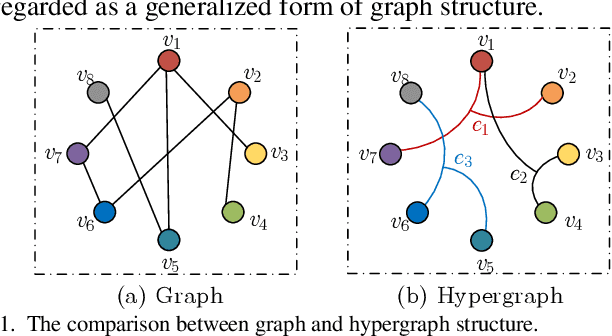
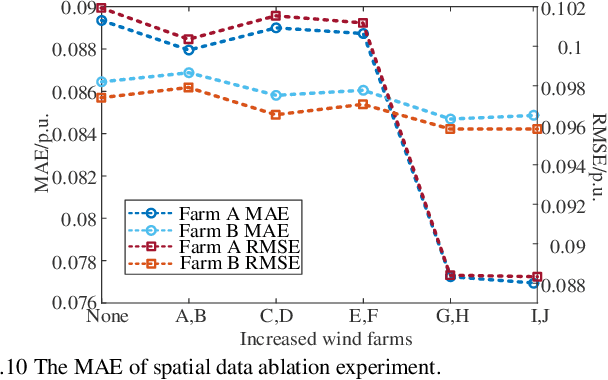
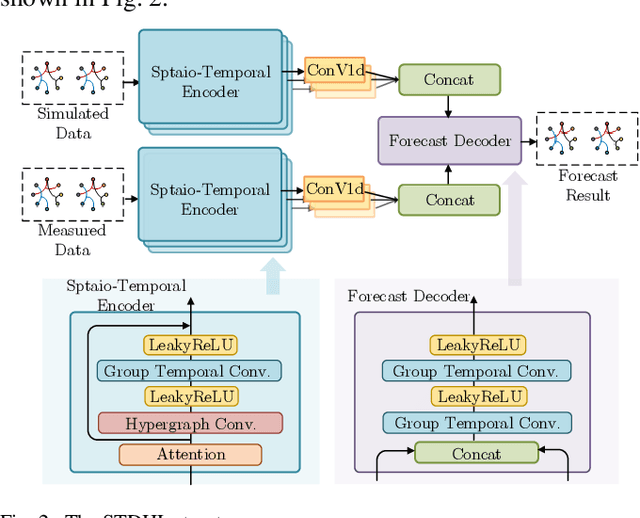
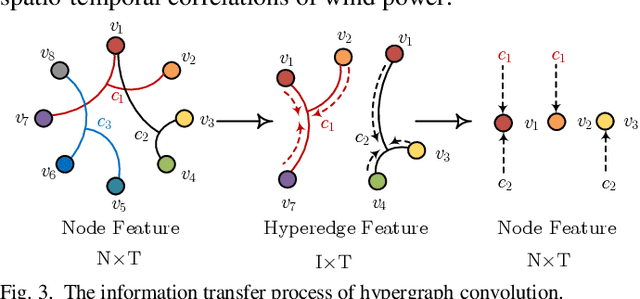
Abstract:Leveraging spatio-temporal correlations among wind farms can significantly enhance the accuracy of ultra-short-term wind power forecasting. However, the complex and dynamic nature of these correlations presents significant modeling challenges. To address this, we propose a spatio-temporal dynamic hypergraph learning (STDHL) model. This model uses a hypergraph structure to represent spatial features among wind farms. Unlike traditional graph structures, which only capture pair-wise node features, hypergraphs create hyperedges connecting multiple nodes, enabling the representation and transmission of higher-order spatial features. The STDHL model incorporates a novel dynamic hypergraph convolutional layer to model dynamic spatial correlations and a grouped temporal convolutional layer for channel-independent temporal modeling. The model uses spatio-temporal encoders to extract features from multi-source covariates, which are mapped to quantile results through a forecast decoder. Experimental results using the GEFCom dataset show that the STDHL model outperforms existing state-of-the-art methods. Furthermore, an in-depth analysis highlights the critical role of spatio-temporal covariates in improving ultra-short-term forecasting accuracy.
Quantization of Climate Change Impacts on Renewable Energy Generation Capacity: A Super-Resolution Recurrent Diffusion Model
Dec 16, 2024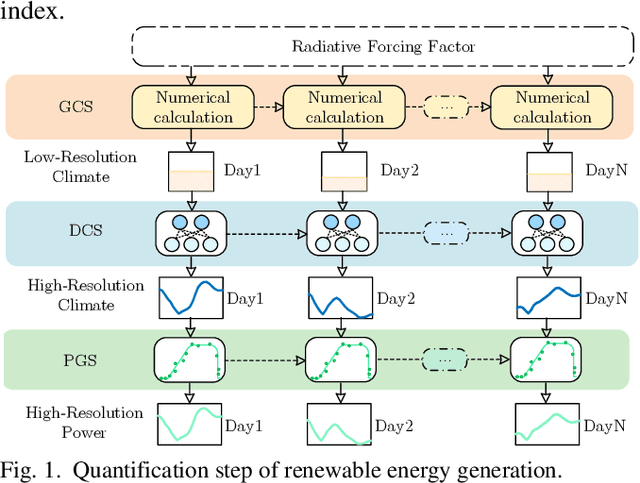
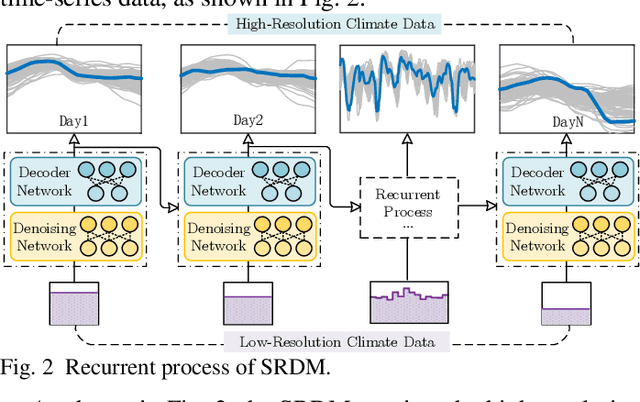
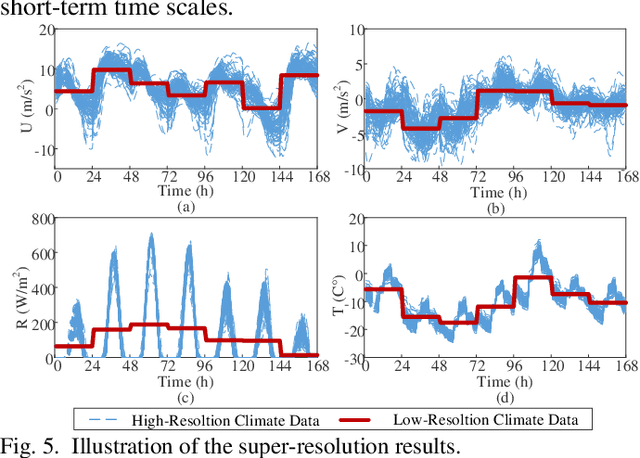
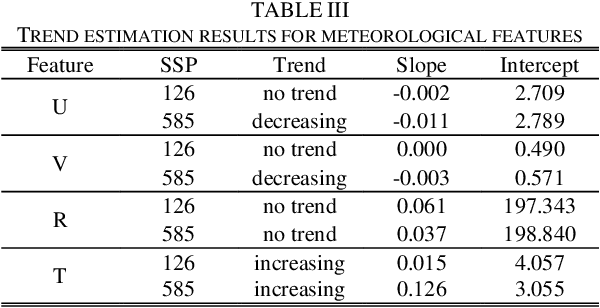
Abstract:Driven by global climate change and the ongoing energy transition, the coupling between power supply capabilities and meteorological factors has become increasingly significant. Over the long term, accurately quantifying the power generation capacity of renewable energy under the influence of climate change is essential for the development of sustainable power systems. However, due to interdisciplinary differences in data requirements, climate data often lacks the necessary hourly resolution to capture the short-term variability and uncertainties of renewable energy resources. To address this limitation, a super-resolution recurrent diffusion model (SRDM) has been developed to enhance the temporal resolution of climate data and model the short-term uncertainty. The SRDM incorporates a pre-trained decoder and a denoising network, that generates long-term, high-resolution climate data through a recurrent coupling mechanism. The high-resolution climate data is then converted into power value using the mechanism model, enabling the simulation of wind and photovoltaic (PV) power generation capacity on future long-term scales. Case studies were conducted in the Ejina region of Inner Mongolia, China, using fifth-generation reanalysis (ERA5) and coupled model intercomparison project (CMIP6) data under two climate pathways: SSP126 and SSP585. The results demonstrate that the SRDM outperforms existing generative models in generating super-resolution climate data. For the Ejina region, under a high-emission pathway, the annual utilization hours of wind power are projected to decrease by 2.82 hours/year, while those for PV power are projected to decrease by 0.26 hours/year. Furthermore, the research highlights the estimation biases introduced when low-resolution climate data is used for power conversion.
InfRS: Incremental Few-Shot Object Detection in Remote Sensing Images
May 18, 2024Abstract:Recently, the field of few-shot detection within remote sensing imagery has witnessed significant advancements. Despite these progresses, the capacity for continuous conceptual learning still poses a significant challenge to existing methodologies. In this paper, we explore the intricate task of incremental few-shot object detection in remote sensing images. We introduce a pioneering fine-tuningbased technique, termed InfRS, designed to facilitate the incremental learning of novel classes using a restricted set of examples, while concurrently preserving the performance on established base classes without the need to revisit previous datasets. Specifically, we pretrain the model using abundant data from base classes and then generate a set of class-wise prototypes that represent the intrinsic characteristics of the data. In the incremental learning stage, we introduce a Hybrid Prototypical Contrastive (HPC) encoding module for learning discriminative representations. Furthermore, we develop a prototypical calibration strategy based on the Wasserstein distance to mitigate the catastrophic forgetting problem. Comprehensive evaluations on the NWPU VHR-10 and DIOR datasets demonstrate that our model can effectively solve the iFSOD problem in remote sensing images. Code will be released.
 Add to Chrome
Add to Chrome Add to Firefox
Add to Firefox Add to Edge
Add to Edge